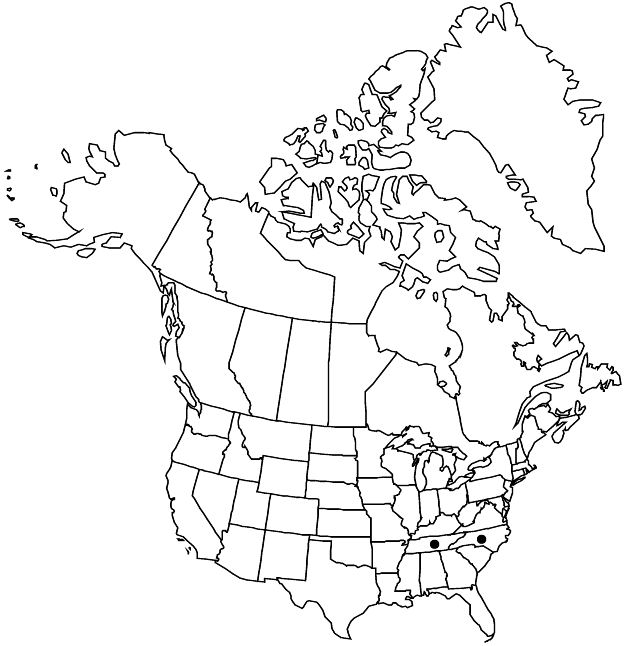Geum geniculatum
Fl. Bor.-Amer. 1: 300. 1803.
Plants leafy-stemmed. Stems 50–84 cm, sparsely hirsute proximally, hirsute distally. Leaves: basal 14–30 cm, blade interruptedly lyrate-pinnate, major leaflets 1–5, mixed with 2–5 minor ones, terminal leaflet slightly to much larger than major laterals; cauline 4–12 cm, stipules ± free, 7–20 × 4–8 mm, blade pinnate, 3-foliolate, or simple and 3-lobed. Inflorescences 5–15-flowered. Pedicels densely pilose, some hairs septate-glandular. Flowers nodding; epicalyx bractlets 2.5–3 mm; hypanthium green with purple tinge at base to greenish maroon; sepals erect to erect-spreading, 5–8 mm; petals erect, white, pink, or lavender, spatulate-obovate, 5–7 mm, ± equal to sepals, apex rounded, truncate, or shallowly emarginate. Fruiting tori sessile, densely bristly. Fruiting styles geniculate-jointed, proximal segment persistent, 2–4.5 mm, apex hooked, septate-glandular hairs on basal 1/2, distal segment very tardily deciduous, 5–8 mm, pilose except apical 1–2 mm, with some glandular hairs.
Phenology: Flowering summer.
Habitat: Mountain balds, seeps, stream banks, cliffs, wooded boulder fields
Elevation: 1600–1900 m
Discussion
Of conservation concern.
Geum geniculatum is enigmatic and is currently known from 15 populations in western North Carolina and eastern Tennessee. As a rare plant, it has attracted far less attention than G. radiatum, which is also known from the same region. Although G. geniculatum is not listed federally as endangered or threatened, it is listed as threatened by North Carolina and as endangered by Tennessee.
W. Gajewski (1957) speculated that Geum geniculatum is a hybrid, with one of the parents being G. rivale. K. R. Robertson (1974) pointed out that the nearest locality for G. rivale is in West Virginia and that pollen stainability of G. geniculatum is very high. Geum geniculatum may be of hybrid origin; it cannot be a first-generation hybrid. North American taxonomists have treated it as a valid species.
Selected References
None.
